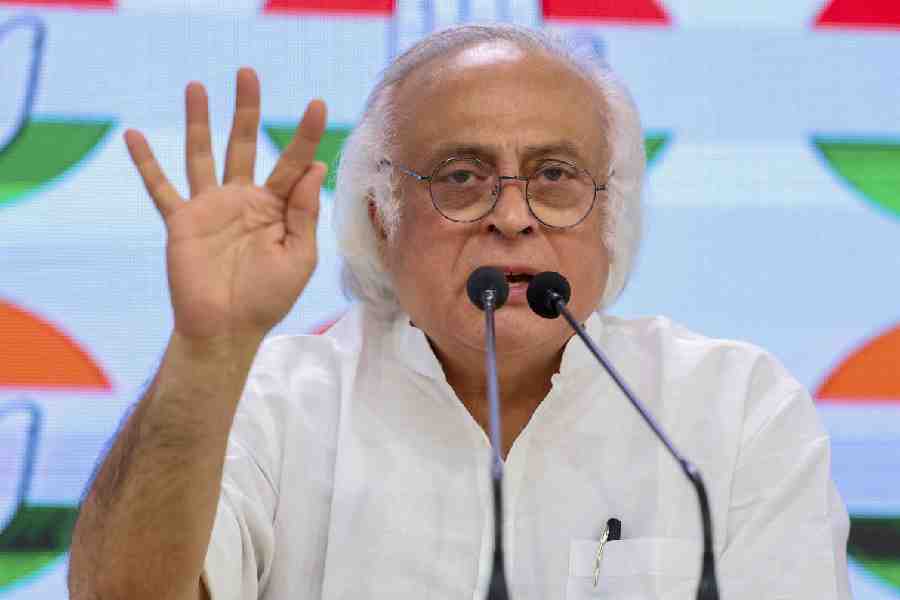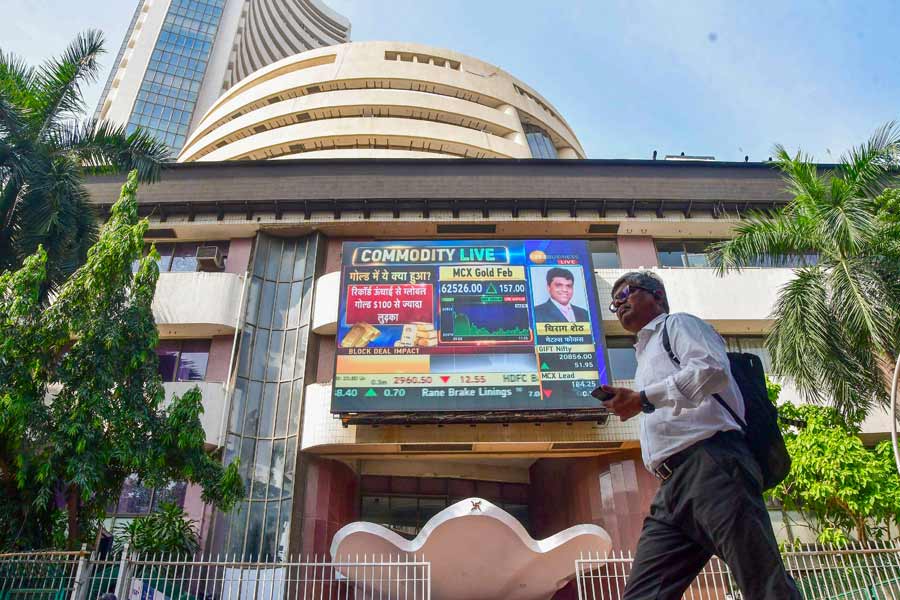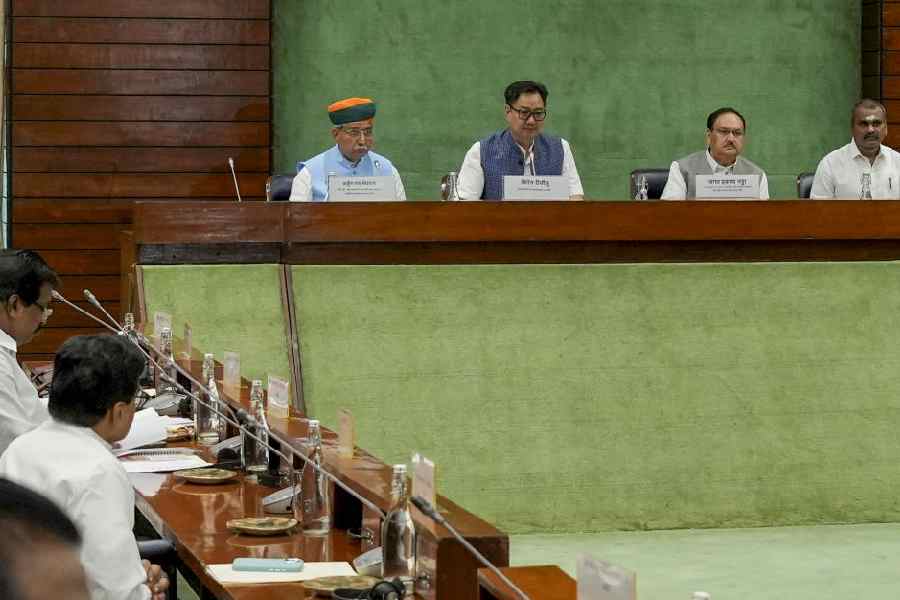|
|
| A look into things |
Amidst the controversy about “India Shining”, a new argument has started about when the turnaround started. Two economists in the United States of America, Dani Rodrick of Harvard University and Arvind Subramanian of the International Monetary Fund, have recently written an article entitled, “From Hindu growth to productivity surge: The mystery of the Indian growth transition.”
The writers point out that the change in India’s economic growth started not from the economic reforms of 1991 as is commonly believed, but from a decade earlier. While they grant that Manmohan Singh’s reforms did a great deal to help India open up and place it on a sustainable growth path, the turnaround started in the Eighties. This turnaround had, in their view, resulted in a rise in the rate of growth of per capita income from 1.7 per cent in 1950-80 to 3.8 per cent in 1980-2000. So, the shine of “India Shining” started in 1980 rather than in 1990.
The authors trace the sharp turnaround in growth to the attitudinal change to business that commenced with Indira Gandhi’s return to power in the Eighties. They point out that she realigned herself politically with the private sector and abandoned her previous rhetoric about socialism. “The national government’s attitude to business went from outright hostile to supportive.” This change of governmental attitude initiated by Indira Gandhi was primarily responsible, say the authors, for stoking the spirit of enterprise and for effecting an improvement in the investment climate. The authors draw a clear distinction between a pro-business orientation, which the Eighties witnessed, and the pro-market orientation, witnessed in Latin American countries at the time.
The authors point out that South Korea had a similar change in orientation towards pro-business attitudes and policies. Governments in this paradigm worked with, rather than in spite of, enterprises. There is also a hint in the article that there was an exchange — support for business in return for business support for the Congress. This weighed in favour of incumbents rather than the new entrants — a change that is difficult to justify considering the large number of new entrepreneurs spawned in the Eighties in India.
It has to be pointed out, however, that a pro-business orientation on the part of the government by itself cannot explain the sharp increase in the rate of growth of incomes and total factor productivity in the Eighties. The government of India in the Eighties combined its pro-business orientation with a clearly articulated vision of a policy environment less marked by controls and constraints. The period was marked by a number of relaxations of controls in respect of licensing, although they were small compared to the broader sweep of reforms of 1990. The main contribution of the authors is to emphasize that these changes, which have led to the progress of today, date from the Eighties rather than later. The changes introduced in the Eighties did not conform to the Washington Consensus, as is now understood.
The authors discuss various explanations. They dismiss as incorrect the attribution of the turnaround of the Eighties to an improved external environment. The external environment had, in fact, deteriorated and turned adverse in the Eighties. The terms of trade had also declined against India by 20 per cent during the period.
Was the fiscal expansion of the Eighties responsible for the change? The authors do not think so, although they admit that increased public investment did have a lagged effect. The character of the deficit was itself skewed more in favour of investment than current expenditure. The management of fiscal deficit was difficult but undertaken in spite of the severe drought that confronted the country in the late Eighties.
Did the fiscal deficit of the Eighties leak into the external account, leading to the crisis of the Nineties, as the authors hint? This theory is rather overstretched. The external exposure of India even in the crisis years was not too damaging. India had wisely refrained from sovereign commercial borrowing on the external markets, notwithstanding loaded advice by multilateral institutions in the Eighties to do so. External vulnerability was the result of a peculiar conjuncture of circumstances — the domestic political crisis following the hung polls of the late Eighties, the downgrading by rating agencies and the short-term borrowing resorted to by premier parastatals like Indian Oil Corporation Limited on the strength of State Bank of India guarantees. The Persian Gulf crisis also erupted at the time, resulting in a diminution of remittances. India went through an external crisis not so much due to the spillover of fiscal imbalance as the mismanagement to its external commercial borrowing.
In their article, the authors do not give special emphasis to the conscious directional changes made in the Eighties by the Rajiv Gandhi government in favour of science and technology — information technology in particular — as well as in the power sector. The direction of government policy changed sharply and spectacularly — after a brief shut-down due to the political instability of the late Seventies.
Such a clear exposition of the turnaround of the Eighties may not be palatable to latter-day reformers. While no one denies the contribution of the reforms of the Nineties towards making India more responsive to global opportunities, one cannot reject the contribution of the earlier reforms of the Eighties, however unspectacular they may appear against the current record.
Success has many claimants to paternity, while failure has none. The alacrity with which the “India Shining” campaign has been appropriated by the current political incumbents contrasts with the factual reality that the shine really started in the Eighties, when Indira Gandhi and Rajiv Gandhi ruled the country. It was not as though the policy changes of the Eighties were based on the whims and fancies of individual leaders. Singh himself was very much in the policy-making councils — both as governor of the Reserve Bank of India and as the deputy chairman, Planning Commission. While the leaders of the Eighties drew on the counsel of many, they were guided by the economic vision provided by Singh and L.K. Jha among economists, and technical visionaries such as Sam Pitroda on the innovations front. It was a pity that the success of the Eighties was unfortunately eclipsed by the implosion of 1991 — which owed more to political causes and global geopolitical developments than to domestic economic changes.
There was a clear vision of policy, which shaped the change in attitudes in the Eighties. As a participant in some of these at the time, I can vouch for the fact that a deep commitment to the national economic and social growth informed the rulers. The craze for “computerization” started in the Eighties. The flurry of activity in the telecommunications arena that Pitroda started with his CDOT innovations also typified the “can do” attitude of the Eighties. These laid the foundation for the boom that we witness today.
The policy changes of the Eighties did not benefit merely the incumbents. Many new entrepreneurs blossomed in the Eighties. I cannot do better than quote the authors themselves: “It is perhaps not a coincidence that some of the IT powerhouses that would begin to fuel India’s growth a decade or so later got established in the early 1980s, just as the economic environment was turning more business-friendly. For example, Wipro first ventured into IT in 1980 and Infosys was founded in 1981. These firms eventually were able to reap handsome benefits from India’s prior public investments in higher education (the IITs in particular) once the policy environment turned permissive. Their story is in many ways similar to the one we have laid out for the more traditional activities during the 1980s: pre-existing strengths unleashed by more pro-business policy attitudes.”
Truly. “India Shining” started its journey of progress in the Eighties themselves, rather than now or in the Nineties.











